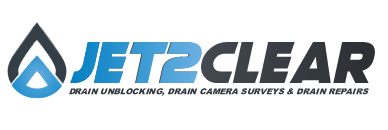Soakaway Regulations
Soakaway Regulations and How To Comply
If a sewerage system doesn’t service your home, you become responsible for the disposal of your household waste. There are different types of systems available to make this possible in a safe way, two key ones are septic tanks and sewage treatment plants.
Both of these systems require a soakaway since new regulations were brought in from 1st January 2020 by the Environment Agency. Aside from the detrimental impact your waste could have on the environment if not treated properly, you will also be in breach of the Environment Agency’s rules which could land you in trouble if you do not comply!
What Is A Soakaway?
There are different types of soakaway but usually they are a drainage field that treats your waste to ensure that it won’t pollute the surrounding area when is passes into it. The different types of soakaway are listed below:
Drainage Field
A drainage field is a network of perforated pipes set into trenches which give a second level of treatment to the effluent which reaches it. This treated matter then soaks into the ground without detrimental impact to the local environment. The area must be large enough to install a drainage field and the ground needs to be suitable enough so must pass a percolation test.
Soakaway Chamber
This is usually installed if there is insufficient space for a full drainage field and sits deeper to prevent localised pollution. The ground must still be of drainage field standard so various tests are carried out to measure this at the appropriate depth.
Bore Hole
These are typically used when the ground conditions at drainage field level are not suitable for one. It is a perforated pipe measuring 6 inches in diameter and descends vertically to a suitable depth where the ground conditions are better.
Rubble pits and bespoke soakaways can also be discussed if the above options are not feasible on your land. Please be aware that bore holes and rubble pits are no longer compliant for use with septic tanks or sewage treatment plants.
Drainage fields are the most common form of soakaway systems we install and service both septic tanks and sewage treatment plants. There are certain regulations that must be observed when installing one on your property which are:
Soakaway Regulations
There are strict soakaway regulations set out by the Environment Agency. A soakaway system or drainage field must meet certain criteria in order to satisfy the regulations laid out. They are:
- Soakaway should not be within 2 metres of a neighbouring boundary
- It must be at least 10 metres away from any watercourse
- Must be 15 metres away from any house or building
- It must be at least 50 metres away from any water source (such as a reservoir or well)
- It must not be near any driveways, access roads or paved areas
For all the advice you need on soakaways, septic tanks, sewage treatment plants and their regulations contact the experts at Jet2Clear today.

